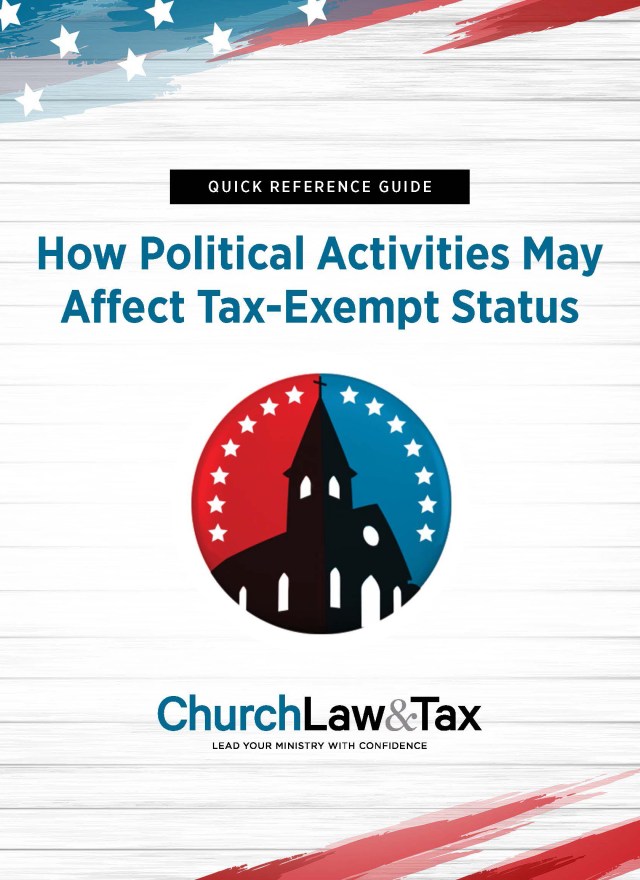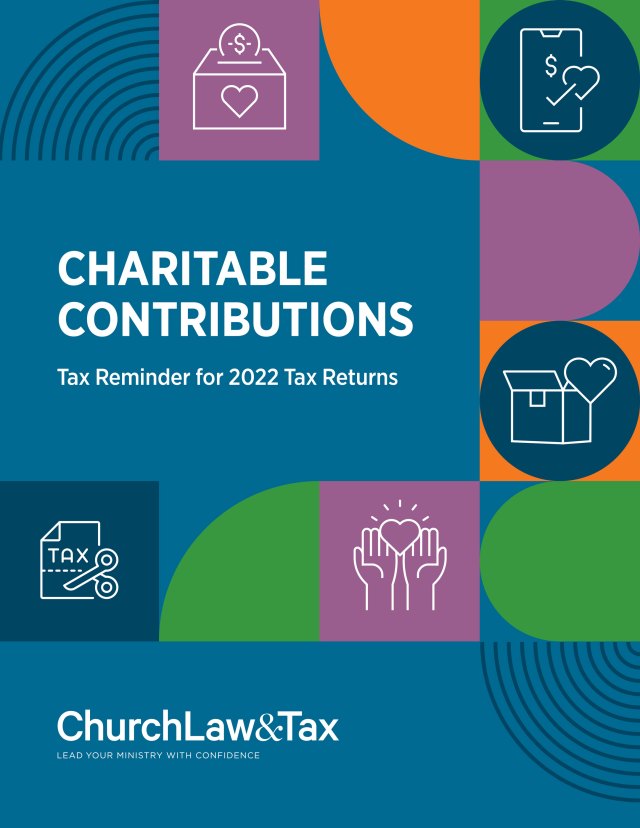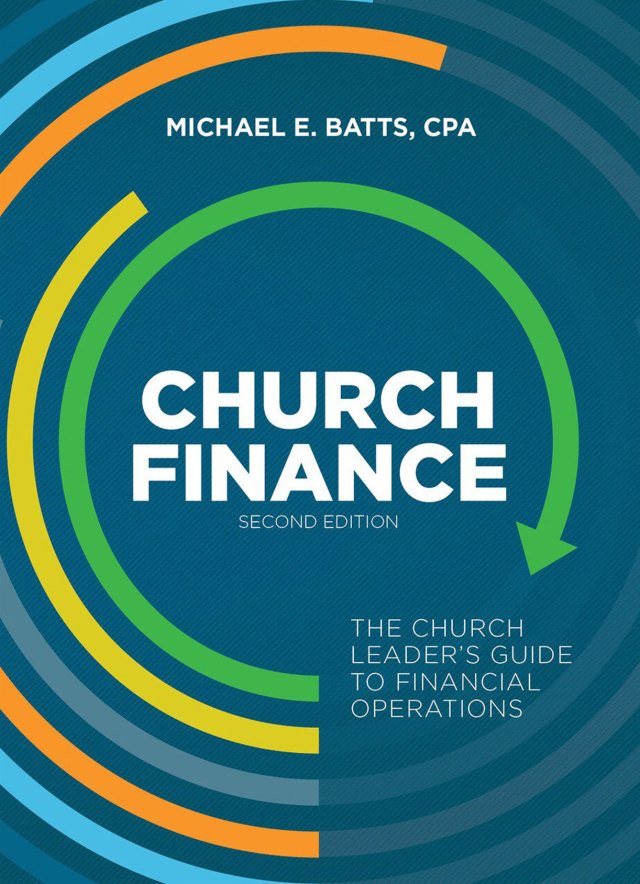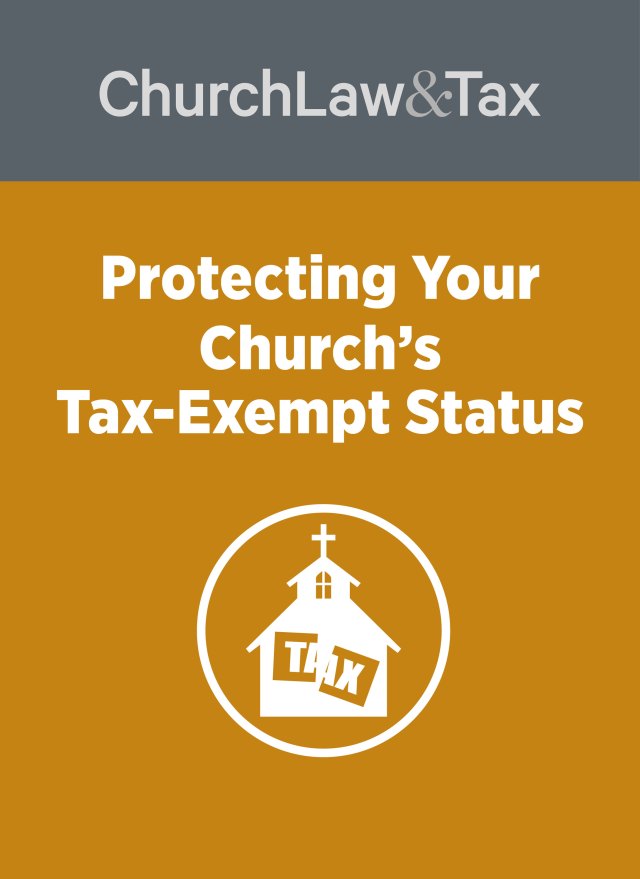• Key point. Merchandise sold in a charitable organization’s “gift shop” may be subject to the federal tax on unrelated business income.
The IRS has issued a private letter ruling addressing the application of the tax on unrelated business income to various items sold in a charity’s gift shop. While the ruling involved a museum rather than a church, it will be of interest to any church that conducts similar activities. The museum sells merchandise at retail, wholesale, and by mail order. Items for sale include: (a) books, tapes, records, films and compact discs relating to items in the museum’s collections; (b) toys, games, hats, and flags; (c) non—prepackaged food products; (d) reproductions and adaptations of items in the museum’s collections; (e) miscellaneous products for the convenience of museum visitors; (f) newspapers and magazines; (g) prepackaged foods, toiletries and tobacco products; (h) Christmas cards, ornaments and decorations; (i) souvenirs and mementos; (j) collectibles; (k) products that are interpretations of or have designs taken from items in the museum’s collections; and, (l) note cards, calendars, postcards and assorted paper products. The museum markets this merchandise through gift shops in the museum and surrounding area, as well as by mail order through its regular and Christmas catalogues. It also advertises its products in various other publications. These sales activities compete with privately—owned stores and shops, many of which are found near the museum. The museum asked the IRS for a ruling addressing the applicability of the unrelated business income tax to these sales.
The IRS began its ruling by noting that income generated by a charity from an activity is subject to the tax on unrelated business income if the following three conditions are present: (1) the income is from a trade or business; (2) the trade or business is regularly carried on; and, (3) the trade or business is not substantially related to the exercise or performance by the charity of its exempt purposes. The IRS noted that the income tax regulations clarify that a trade or business is related to an organization’s exempt purpose only where the conduct of the business activities “has a causal relationship to the achievement of the organization’s exempt purpose. This causal relationship must be a substantial one. A substantial causal relationship exists only where the activity contributes importantly to the accomplishment of exempt purposes.” The IRS concluded that the museum’s various sales activities constituted a trade or business that was regularly carried on. It noted that the real issue in this case was “whether the museum’s sales activities are substantially related to its exempt purposes.”
The IRS conceded that “[w]here the primary purpose behind the production and sale of the item is to further the organization’s exempt purpose, the sale is related, and income earned from that sale is exempt, even though the item has a utilitarian function or value. It is only where the primary purpose behind the production and sale of the item is to generate income, that the sale is taxable.” It continued:
A number of differing factors must be considered in analyzing the primary purpose underlying the sale of each item to determine whether sales activities are related. These factors are generally only a means to determine the primary purpose of each article, but these factors could include, for example, the degree of connection between the item and the museum’s collection, as well as the extent to which the item relates to the form and design of the original item. The overall impression conveyed by the article is another factor to be considered. If the dominant impression one gains from viewing or using the article relates to the subject matter of the original article, picture or likeness, substantial relatedness would be established. If the non—charitable use or function predominates, the sale would be unrelated.
In applying these considerations to the sales items in this case, the IRS reached the following conclusions with regard to the museum’s sale of various items: (1) The sale of books, tapes, records, films and compact discs on topics and activities relating to the museum and its collections “contributes importantly to [the museum’s] educational purposes … [and thus is] related [nontaxable].” (2) The sale of reproductions of items in the museum’s collections is related to the museum’s exempt purposes. (3) The sale of miscellaneous products such as film, batteries, flashbulbs, ponchos and umbrellas, which are sold for the convenience of visitors, enables visitors to devote a greater portion of their time to viewing the museum. As such the sale of such items is substantially related to the museum’s exempt purposes “because they contribute importantly to the accomplishment of those purposes.” (4) The sale of newspapers, magazines, tobacco produces, candy, pain relievers, toothpaste, golf clothing and accessories, metal polish, neckties, caps, shirts and books, which do not relate to museum collections “does not contribute importantly to the accomplishment of [the museum’s] exempt purposes and, therefore, is unrelated.” (5) The sale of prepackaged foods and toiletries is “not substantially related to [the museum’s] exempt purposes” because the sale of these items does not contribute importantly to achieving those purposes. (6) The sale of Christmas cards and decorations bearing representations of items in the museum’s collections is related to the museum’s exempt purpose. (7) The sale of souvenirs and mementoes, including inexpensive tiles, plates, key rings, glasses, steins, shot glasses, mugs, spoons, bells, pill boxes and thimbles, even if they contain an image of some item in the museum’s collections, “generally is not related because the nexus between the item and [the collection] is too slight …. Although they may include some design elements or motifs found in [the museum’s] collection … these items generally do not meet the primary purpose test discussed above. Merely imprinting an object with the museum’s name does not establish a substantial causal relationship for purposes of … the code.” (8) The sale of collectibles, including pewter miniatures of antiques in the museum’s collections that “are true to the originals [and thus are] reproductions or adaptations of items found in [the museum’s] collections” is related to its exempt purposes. (9) The museum sold several products that are interpretations of items in the museum’s collections, including furniture, dinnerware, silverware, pewter, stemware, rugs, lamps, bookends, trivets, prints, jewelry, scarves, place mats, tea towels, pot holders, coasters and certain tote bags. Many of these products carry depictions of items in the museum’s collections. However, these items are not reproductions or adaptations, but are interpretations. Typically, their only connection to items in the museum’s collections is that they display a design taken from a particular object. The IRS concluded that while “under certain circumstances, the sale of an interpretation may further exempt purposes, in our view, the primary purpose of the items in question is to produce income, rather than to encourage personal learning experiences about [the museum’s] collection. Thus, the sale of these items constitutes unrelated trade or business.” (10) The sale of note cards, calendars, and postcards is related to the museum’s exempt purposes if these items carry depictions of items in the museum’s collections. “[O]f singular importance” is the care with which the works of art are reproduced on the objects.” However, the sale of other items including blank books, napkins, paper plates, stationery and address books “fails to meet the primary purpose test and are not considered to be substantially related to [the museum’s] exempt purpose. The sale of such items is an unrelated trade or business.”
The IRS concluded that the sale of large quantities of greeting cards through mail order catalogs did not represent an unrelated trade or business. It quoted with approval from an earlier ruling: “The fact that the greeting cards are promoted and sold in a clearly commercial manner at a profit and in competition with commercial greeting card publishers does not alter the fact of the activity’s relatedness to the museum’s exempt purpose.” Revenue Ruling 73—104. The IRS concluded that “once it is determined that a line of merchandise is related to the purposes of a museum, the broader the market the museum is able to reach, the more it can fulfill its exempt function.” IRS Letter Ruling 9550003. [ Federal Income Taxation on Unrelated Business Income of Churches]
© Copyright 1996, 1998 by Church Law & Tax Report. All rights reserved. This publication is designed to provide accurate and authoritative information in regard to the subject matter covered. It is provided with the understanding that the publisher is not engaged in rendering legal, accounting, or other professional service. If legal advice or other expert assistance is required, the services of a competent professional person should be sought. Church Law & Tax Report, PO Box 1098, Matthews, NC 28106. Reference Code: m78 c0296




